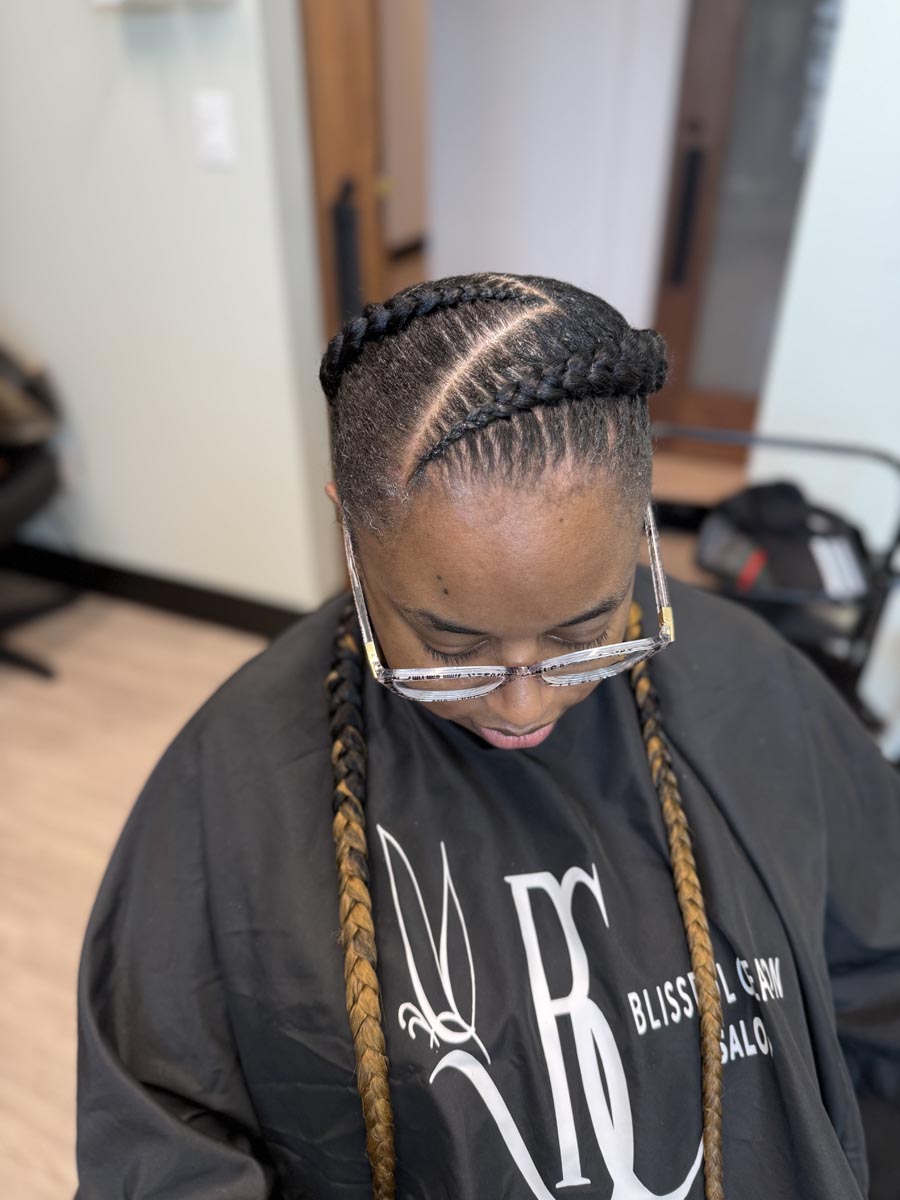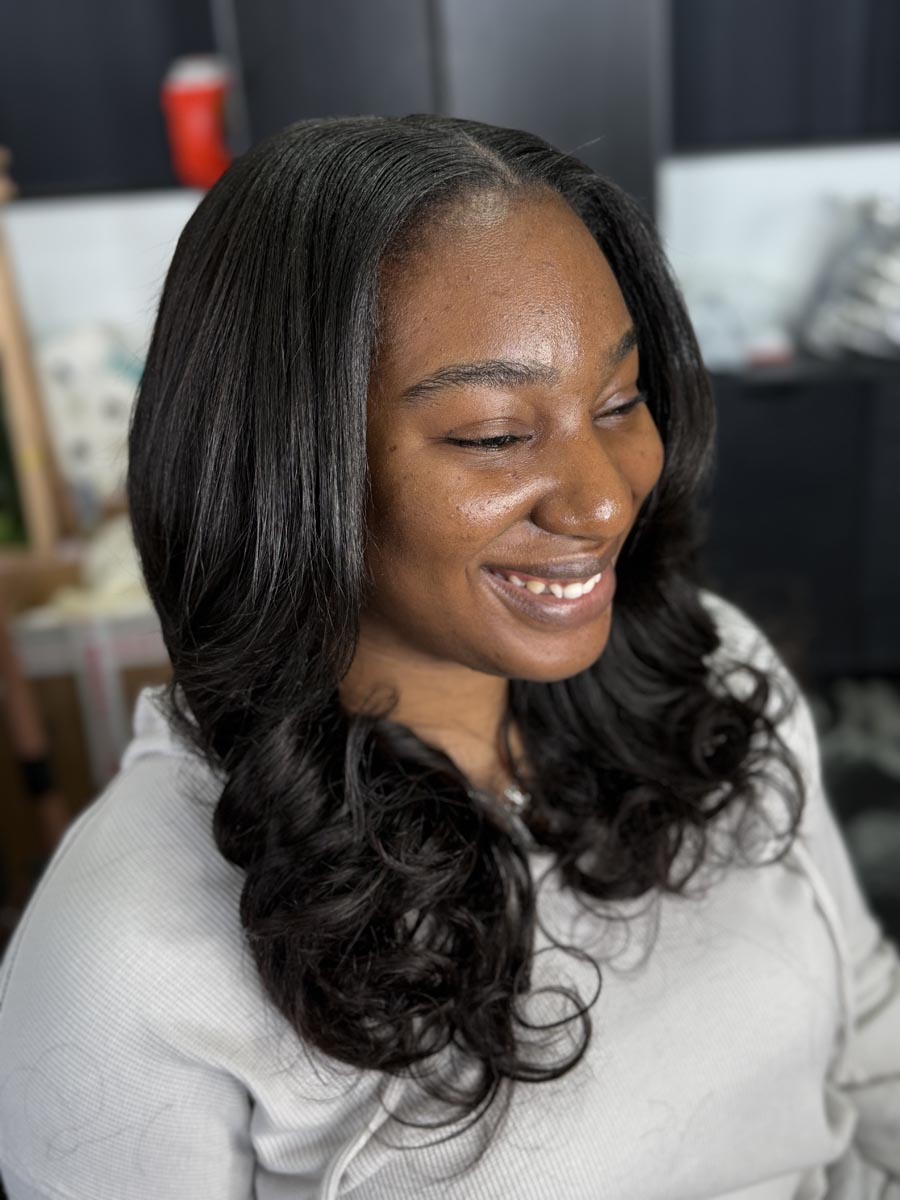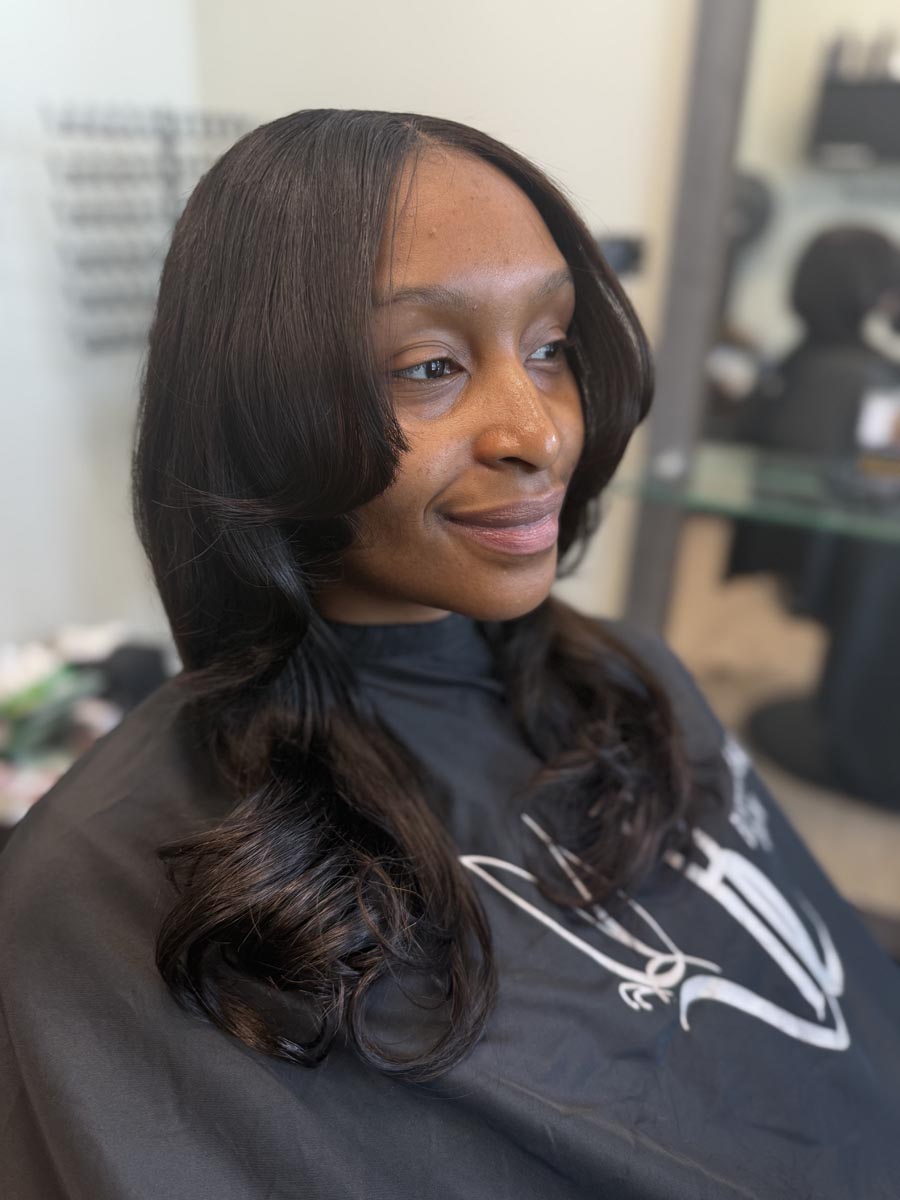When it comes to achieving smooth, straight hair, many women with natural textures are torn between two options: the silk press or the relaxer. At Blissful Creation Hair Salon in McKinney, TX, we specialize in healthy hair care, and we get this question all the time:
“Which one is better for my hair?”
If you’re deciding between a silk press or a relaxer, this guide breaks down the differences, pros, cons, and how to choose what’s best for your hair goals and lifestyle.
What Is a Silk Press?
A silk press is a heat-styling technique that straightens natural hair without the use of chemicals. It involves a deep cleanse, conditioning, blow-drying, and flat-ironing using heat protectants to create a smooth, shiny finish.
Benefits of a Silk Press:
- Chemical-free
- Temporary (reverts with moisture or wash)
- Allows you to switch back to curls easily
- Great for special events or professional styling
- No long-term damage if done properly
Considerations:
- Results typically last 1–2 weeks
- Requires humidity protection and minimal sweating
- Frequent presses without proper care can cause heat damage
What Is a Relaxer?
A relaxer is a chemical treatment that permanently straightens natural hair by altering the structure of the hair shaft. Once relaxed, your hair will not return to its natural curl pattern without cutting the treated portion.
Benefits of a Relaxer:
- Low daily maintenance
- Long-lasting straight results
- Ideal for those who prefer a consistent look
Considerations:
- Permanent change to hair texture
- Higher risk of damage or breakage if not maintained
- Requires regular touch-ups (every 6–8 weeks)
- Not ideal for transitioning back to natural hair
Silk Press vs. Relaxer: Which Is Right for You?
| Feature | Silk Press | Relaxer |
| Chemicals Used | No | Yes |
| Style Longevity | Temporary (1–2 weeks) | Permanent |
| Curl Reversion | Yes | No |
| Hair Health Focus | High | Moderate (requires care) |
| Best For | Natural hair versatility | Long-term straight styles |
| Damage Risk | Low (with heat protection) | High (if not maintained) |




